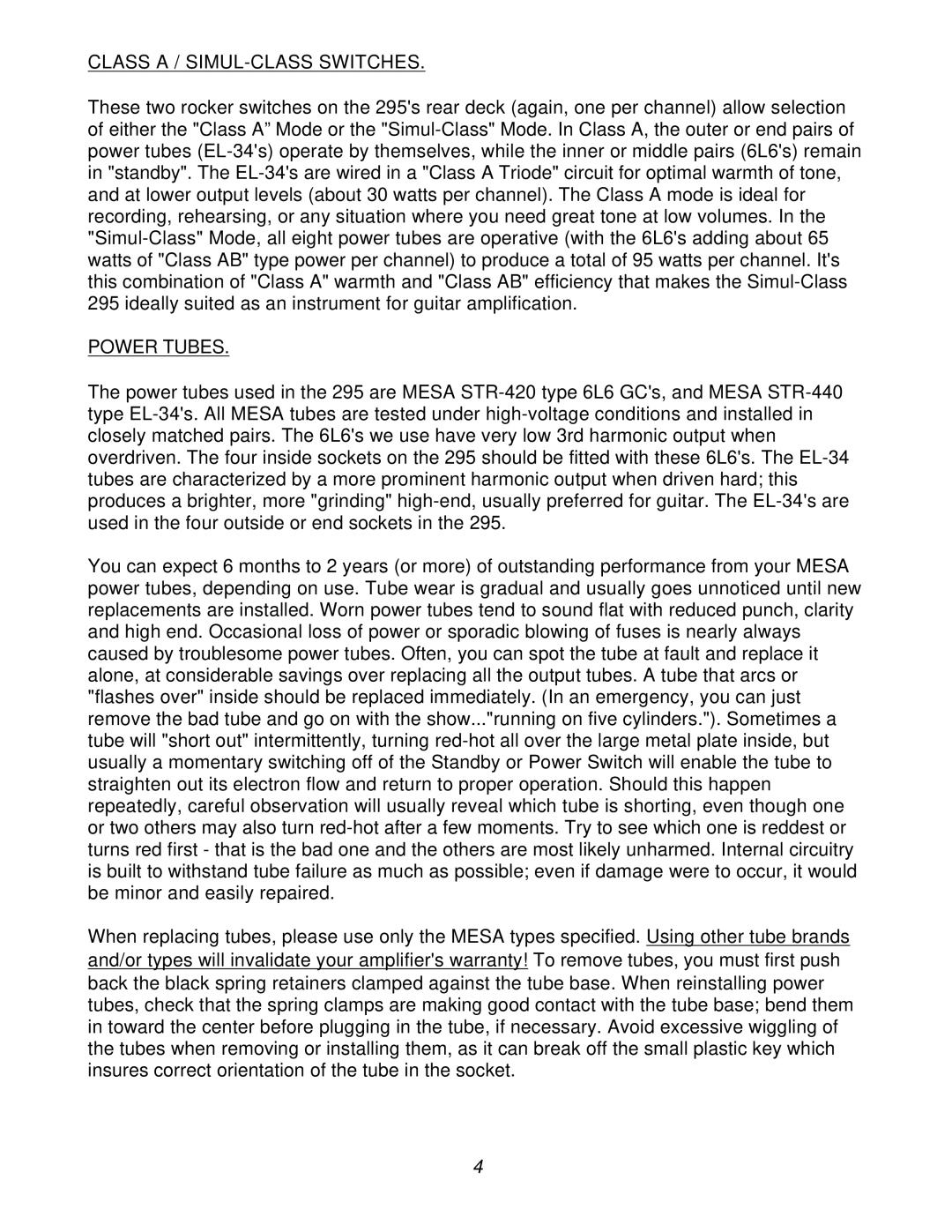295 specifications
The Mesa/Boogie 295 is a powerhouse in the realm of guitar amplification, known for its exceptional performance, versatility, and rich tonal character. As a semi-conductor-driven amplifier, the 295 is designed to cater to a wide variety of musical styles, from heavy rock to jazz, making it a preferred choice for professional and amateur musicians alike.One of the most notable features of the 295 is its dual-channel configuration, allowing players to engage in intricate tone shaping across two distinct sound profiles. Each channel comes equipped with independent EQ controls, enabling guitarists to fine-tune their sound seamlessly. The 295 also incorporates a high-gain input, offering a robust platform for capturing the nuances of various playing styles while delivering an incredibly dynamic response.
The amp's distinctive tone stems from its use of Mesa's patented circuit designs, which prioritize both warmth and clarity. The 295's output stage is driven by a pair of EL34 power tubes, contributing to its distinctive midrange punch and harmonically rich overdrive characteristics. Additionally, the inclusion of a unique graphic EQ further enhances tonal shaping capabilities, providing players with an array of tonal options that can be easily dialed in for diverse musical scenarios.
Another key feature of the Mesa/Boogie 295 is its impressive wattage, delivering up to 90 watts of power, making it suitable for both recording sessions and live performances. The amp is housed in a rugged chassis, designed to withstand the rigors of touring, while offering aesthetic appeal that aligns with Mesa/Boogie’s high-end branding.
Moreover, the 295 features a power scaling option, allowing players to reduce wattage while maintaining tonal integrity. This is especially beneficial for sessions in smaller venues or practice environments where lower volume levels are necessary, yet sonic depth is not compromised.
In conclusion, the Mesa/Boogie 295 stands out as a premier amplifier that embodies Mesa/Boogie's dedication to quality and innovation. With its versatile dual-channel setup, dynamic EQ options, powerful output, and robust build quality, the 295 continues to be a valuable tool for guitarists seeking to elevate their sound. Whether on stage or in the studio, the 295 delivers rich, expressive tones that resonate deeply with musicians across the spectrum.
